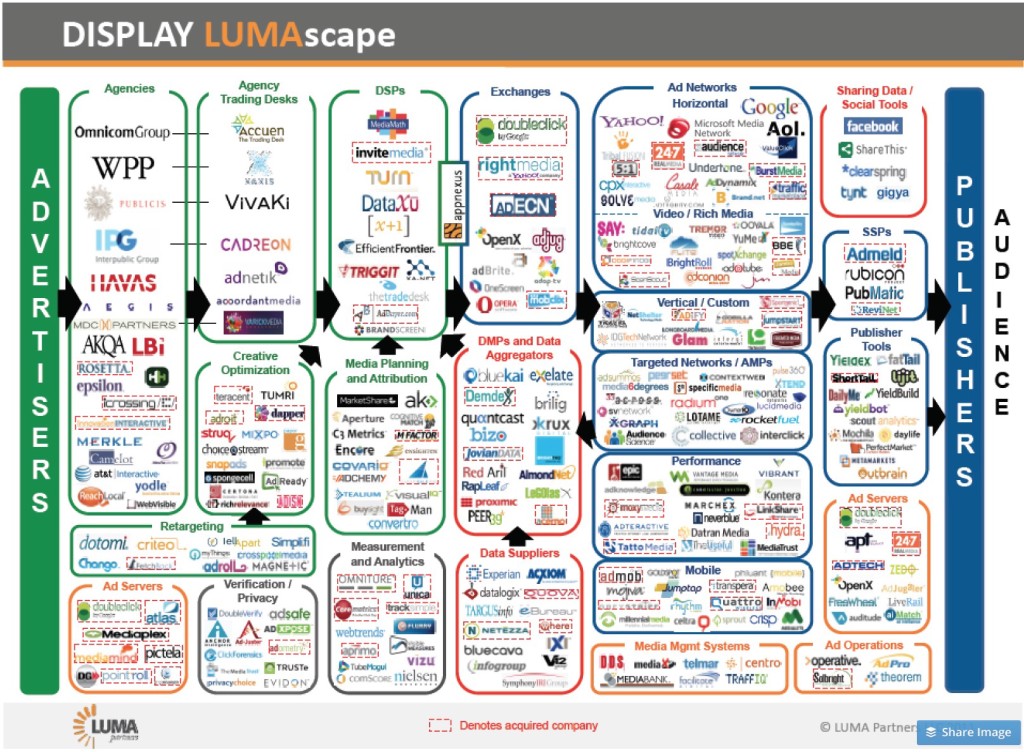The Incite Programmatic Summit 2015 conference at the New Yorker Hotel brought together media publishing companies, digital agencies, and brands this week. Programmatic advertising is technology and best practices to run effective highly targeted advertisements to consumers. The ad industry is trying to find an automated way to achieve placing the most effective ads on Web pages and mobile apps.
Publishers, agencies and brands all want to sit around the same table and have a discussion: The brand wants to know the cost to get in front of qualified customers, the media publisher – who has a sales team selling advertisements – wants to know how many ads will run, and the cost, and the agency needs to know to what extent their creativity in their ads will be effective to the target audience.
To understand the cooperation that is needed to make a programmatic ad buying success consider brands like Kellogg’s for PopTarts wanting a cool trendy appearance, to a younger audience. They approach a media company through an agency to surface Shaun White videos that they can attach to the PopTarts brand through creative advertisements. If the PopTarts/Shaun White ad gets 20,000 to 50,000 viral shares, the brand loves it.
The problem for everyone involved is the huge technology and branding solution needed. Here is the programmatic universe:
This is a picture of the advertising industry hitting the rocks. It is too complex for all parties involved.
The upcoming V software from VOTSH will provide brands and agencies with APIs for programmatic advertising within Web page and mobile apps (iPhone, Android.)
The challenges to programmatic advertising in 2015:
- Scarce inventory of places to run the ads
- Not scalable because the discussion among brands, publishers, and agencies has to happen for each ad campaign
- Long lead times
The scalability isn’t a technology issue, there are many solutions in AdTech. The key issue is the manual natures of developing the knowledge of the inventory available and matching it to the brands goals.
The panelists at the Incite conference spend an enormous amount of their day-to-day time identifying and evaluating tech solutions. They see the mergers and acquisition activity around programmatic being an indication the space is healthy.
Data Management Platforms (DMP) are software that gathers up, sorts and houses information, and spits it out in a way that is useful for marketers, publishers and other businesses. DMPs are working really hard to figure out how data about consumers is related. For example, for the person walking near a Best Buy store how can the brand run an ad they will see?
Sarah Gorvitz from Stoli says they need to market to Millennial males, but in the on-line gaming space there are regulations over advertising to people. She needs a way to manage her inventory of ads to comply with the regulation. Right now the solution is to use a media buying company that takes on the responsibility.
Google and Facebook appear to the programmatic industry as tremendous holder’s of consumer’s secondary data – likes, tastes, opinions, buying history – but don’t let brands or agencies know that data.
ID mapping technology will replace the browser cookie to give brands better views of consumer behavior, especially in the mobile space.
Programmatic has moved past low-cost advertising because the technology delivers unique value. For example, some consumers buy breakfast cereal all year, others buy oatmeal when the weather turns cold. Programmatic evolved to deliver highly customized advertising to consumer.
Programmatic really hits the wall when it comes to consumer packaged brand (CPB) giants like PepsiCo, Unilever, and Nestle. The CPB’s very rarely have dedicated resources to manage consumer data. That is a need the V engagement server intends to address.
-Frank


